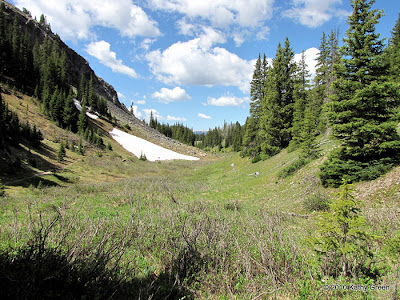Grasses Steal the Glory in the Fall
The Rocky Mountains make a beautiful backdrop for this public garden
Fall is my favorite time of year, as I love all the rich colors it brings. Golden aspen leaves, orange and red oak leaves, and various shades of native shrub leaves all work to make a tapestry of color. But my favorite plants for beautiful fall color are not trees or shrubs, rather the many types of ornamental and native grasses putting on their finest for the fall show. Many native grasses are so beautiful in all seasons, and are welcome in the gardens as well as in the wild. One of the best places in my area to check out ornamental and native grasses is the public garden at the Colorado Springs Utilities Conservation & Environmental Center. This Xeriscape Garden is free to walk through anytime of year, and provides residents with plenty of ideas for waterwise gardening in the high desert environment where the mountains meet the plains.
Ornamental and Native Grasses are used throughout the gardens
in both irrigated and non-irrigated areas.
Ornamental grasses provide foundation plantings
with color, texture and movement.
Giant Sacaton (Sporobolus wrightii) is a Southwestern native,
low water replacement for Miscanthus.
The delicate seed heads of Switch Grass (Panicum) sway with the
slightest winds while the its leaves shimmer in the sun.
Both native and cultivated varieties are available from many nurseries.
Some grasses turn brilliant red in the fall, while others stay golden or blue.
Isn't this a gorgeous shade of red?
Seed heads are one of the best features of grasses.
Schizachyrium scoparium - Little Bluestem is native to much of North America
Now, if the photos above aren't enough to convince you about the wonderful properties of grasses for your gardens, think about this:
- Native and ornamental grasses provide four seasons of interest with color, sound, texture, and movement.
- They need very little fertilizer.
- They're mostly free from pests and diseases.
- They give food for wildlife especially birds.
- Most need much less water than other plants in your landscape.
- The only thing you need to do to them is give them a nice haircut early in the springtime when new growth begins.












My mare's tail has just started flowering. Not sure where that comes from, but wouldn't be one of ours.
ReplyDeleteI was just wondering when to trim some of my grasses. Thanks for the hints and tips.
ReplyDeleteIs this near Garden of the gods?
Hi Diana,
ReplyDeleteThanks so much for the help with the problems on my blog! I've never heard of mare's tail so I'm not sure what it looks like.
Kathy
Hi Rosey,
ReplyDeleteYes, the CSU Demonstration Garden is just up the hill from the Garden of the Gods, on Mesa Road. It also has a wonderful view of the park!
Kathy
I just love the subtle shades of so many colors in the native meadows near me. Gorgeous photos!
ReplyDeleteyes, those grasses are beautiful. We have lots of monocot grasses too, but they are not as colorful here. There are variations in inflorescences, but the leaves just changed from green to brown when they dry up. And nobody plant grasses this tall in gardens!
ReplyDeleteI just gave a talk at the South Coast Chapter of Calif. Native Plant Society on native grasses, sedges and rushes for the garden, so I was delighted to see your post. One question, though. What do you mean by ornamental grass? Do you mean non-native or both native and non-native that have ornamental qualities?
ReplyDeleteThanks for the beautiful post on these under-used plants.